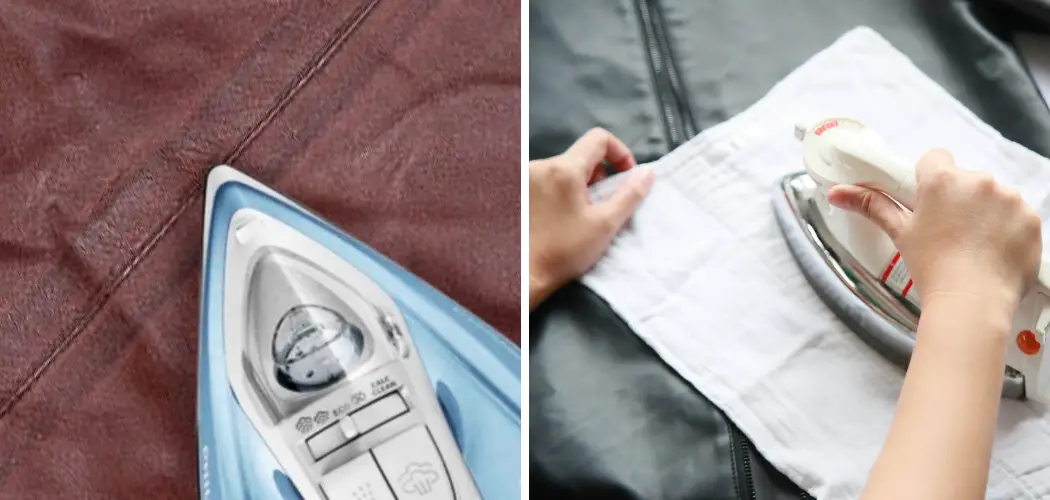Ironing leather pants may seem like a daunting task, given the delicate nature of this luxurious material. However, with the right techniques and precautions, you can achieve a smooth and polished look without compromising the integrity of the leather. In this comprehensive guide, we explore how to iron leather pants, delving into step-by-step methods and essential tips to ensure a flawless finish.
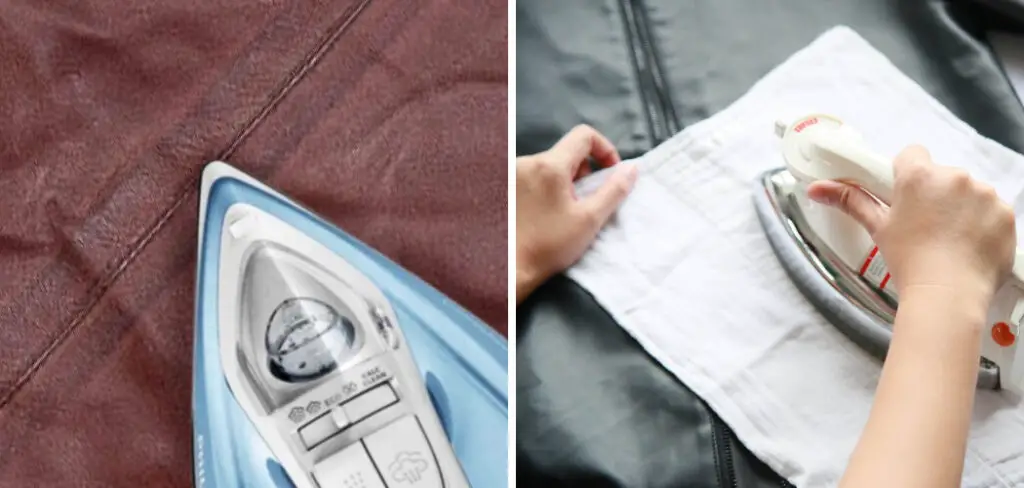
Whether your leather pants have developed creases, wrinkles, or you simply want to maintain a crisp appearance, understanding how to iron them properly is crucial. Uncover the secrets to preserving the sleekness of your leather attire as we navigate through the intricacies of ironing, safeguarding against potential damage and ensuring your leather pants remain a stylish staple in your wardrobe.
Importance of Proper Ironing for Leather Pants
The longevity and appeal of leather pants significantly hinge on how well they are maintained, and proper ironing plays a critical role in this regard. When ironed correctly, not only do the pants exude a refined and sophisticated look, but the risk of damaging the leather’s surface is also minimized.
Improper ironing techniques can lead to burns, unsightly sheen, or even irreversible creasing that detracts from the garment’s natural elegance. Attention to detail is essential to preserve the pants’ shape and texture, ensuring they remain a statement piece in your fashion repertoire.
Benefits of Ironing Leather Pants
Ironing leather pants may not be routine, but it offers significant benefits that enhance your garment’s overall aesthetic. When done correctly, ironing can remove unwanted wrinkles and creases, restoring the leather’s natural beauty and sleek appearance, which is paramount for a polished look.
Such care can transform a pair of tired, worn pants into an elegant and chic item that feels freshly revitalized. Furthermore, the gentle warmth of the iron can help to soften the leather, making it more comfortable to wear while retaining its shape and sleek profile. Regular maintenance through ironing thus ensures that your leather pants remain an enduring feature of your wardrobe, capable of making an impression on any occasion.
Understanding Leather Pants
Leather pants are a unique article of clothing with properties distinct from fabrics like cotton or polyester. Composed of tanned animal hides, leather is known for its durability, flexibility, and ability to conform to the wearer’s body over time. However, this same resilience makes leather sensitive to high temperatures and excessive moisture.

Before attempting to iron leather pants, it’s crucial to appreciate the material’s character and respond accordingly. Leather’s varied responses to environmental factors demand specific care techniques to maintain its original allure without causing harm. Recognizing the individual nature of each leather piece is also important – variations in texture, thickness, and finish can all influence how one should approach the ironing process.
Types of Leather Used in Pants
When it comes to leather pants, there is a diverse selection of leather types each offering its unique characteristics. Full-grain leather is the highest quality, known for its exceptional durability and the ability to develop a rich patina over time. It is the least processed form, retaining the natural grain and marks of the hide.
Top-grain leather, on the other hand, is slightly thinner and has had the very top layer removed, creating a more uniform appearance but still maintaining much of the toughness of full-grain. Suede, created from the underside of the hide, presents a softer, more velvety texture but is less durable and more susceptible to damage from elements.
Nubuck, similar to suede, is buffed full-grain leather with a soft yet sturdy finish. Each type of leather requires different care techniques when ironing, making it imperative to identify the kind of leather before proceeding to ensure the best methods are used to care for your pants properly.
Characteristics of Leather Pants
Leather pants are distinct not only for their style but also for their physical properties that dictate their care. Characteristics such as thickness, texture, and finish vary across different types of leather, impacting how they should be treated. Full-grain leather pants are often stiffer and require a longer break-in period, eventually molding to the body’s contours for a personalized fit.
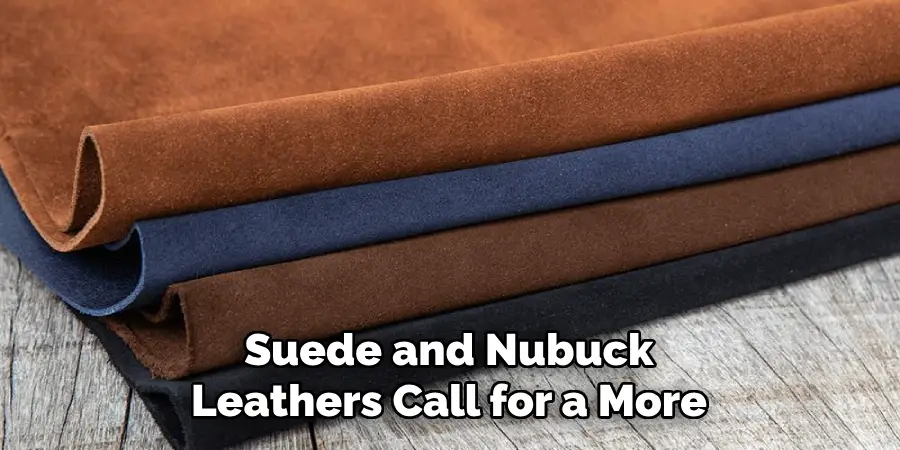
Conversely, suede and nubuck leathers call for a more delicate touch, displaying a supple texture that’s prone to absorbing liquids and staining. Therefore, the approach to cleaning, maintaining, and indeed ironing, differs markedly between these leather types. A commonality among all leather pants is their ability to act as a windbreak and provide an additional layer of protection compared to traditional fabrics, underscoring the practical benefits of their unique characteristics.
Factors Affecting Ironing Techniques
Ironing leather pants effectively requires paying attention to several factors that influence the outcome. The type of leather, as explained earlier, greatly affects the ironing technique; for example, suede and nubuck require more gentle treatment compared to more resilient full-grain or top-grain leathers.
The leather’s finish—whether it is coated, oiled, or untreated—also dictates the level of heat and protection needed during ironing. Additionally, the thickness of the leather determines the heat setting and the need for a pressing cloth to provide a barrier between the iron and the garment. The presence of embellishments or hardware on the pants is another critical factor to consider as metal can heat up quickly and could potentially cause burns or melting.
Finally, the specific kind of creases or wrinkles being addressed could require tailored techniques such as using a dry iron versus steam or implementing a gentle stretching of the material while it’s warm. Considering these factors will ensure the right approach is taken, resulting in a smooth finish without damage.
10 Methods How to Iron Leather Pants
1. Use a Garment Steamer:
Opt for a garment steamer as a gentle alternative to traditional ironing. The steam helps relax the leather fibers, reducing wrinkles and creases. Hang the leather pants and steam them from a distance, allowing the steam to penetrate the material without direct contact.
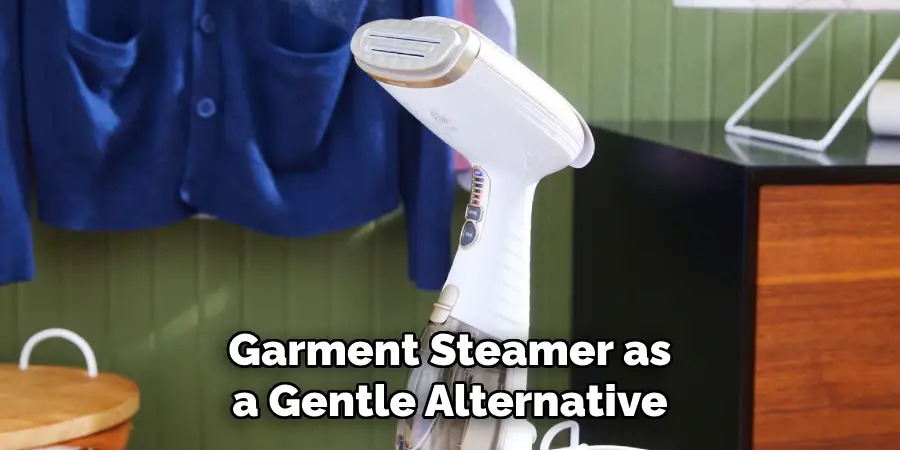
Move the steamer in a continuous motion to evenly distribute the steam and avoid over-saturating one area. Though this method may not completely eliminate all wrinkles, it is a safe and effective way to freshen up leather pants. To add a refreshing scent, mix a few drops of essential oil with water in the steamer’s reservoir.
2. Damp Cloth Method:
Place a damp, clean cloth over the wrinkled areas of the leather pants. Set the iron to a low or medium heat setting without steam. Gently press the iron over the damp cloth, allowing the steam from the cloth to penetrate the leather and release wrinkles. Ensure the iron doesn’t touch the leather directly. Move the damp cloth and iron over all wrinkled areas until the wrinkles disappear. However, be careful not to leave the iron on one spot for too long as it can damage the leather.
After using either of these methods, allow the pants to air dry before wearing them. Do not use a dryer or any other source of heat to dry out the leather as it can cause shrinkage and further damage. Once the pants are completely dry, you can use a leather conditioner or moisturizing cream to keep the leather soft and prevent any future wrinkles.
3. Iron Inside Out:
Turn the leather pants inside out to protect the outer surface. Ironing the inside helps smooth out wrinkles without exposing the leather directly to heat. Use a low or medium heat setting and a clean cloth between the iron and the leather. Move the iron in a gentle, circular motion. Don’t leave the iron in one spot for too long as this can cause damage to the leather. After ironing, let the pants cool down before flipping them back to their original position.
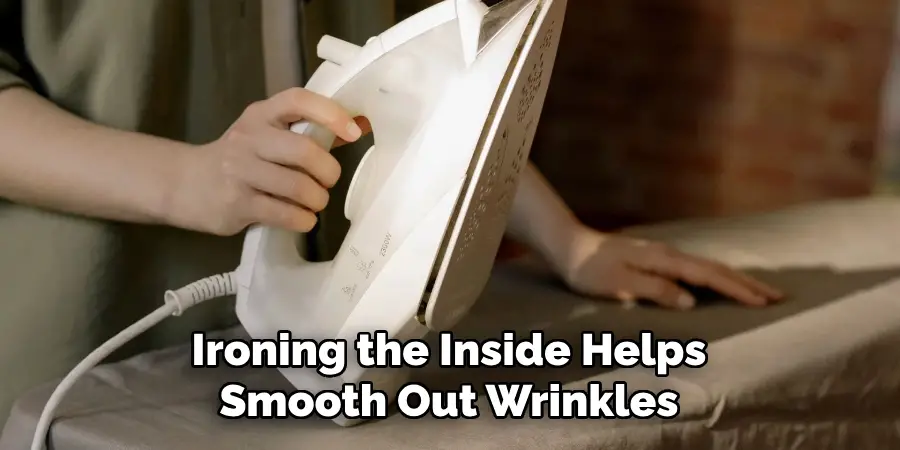
After ironing, you can also use a leather conditioner or oil to keep the leather soft and supple. Simply apply a small amount onto a clean cloth and rub it onto the inside of the pants. This will not only keep the leather looking great, but also prevent it from drying out and cracking over time.
Additionally, you can also use a suede brush or eraser to remove any scuff marks or dirt on the inside of the pants. Gently brush or rub in a circular motion until the mark disappears.
4. Test a Small Area:
Before ironing the entire garment, test a small, inconspicuous area to ensure the leather reacts well to the heat. Choose an inside seam or a discreet spot to verify that the ironing process doesn’t cause discoloration, damage, or changes in texture. Use a pressing cloth or a piece of cotton fabric between the iron and the leather to protect it from direct heat.
It’s always better to be safe than sorry. In case you’re unsure about how the leather will react, it’s recommended to seek professional help or simply avoid ironing altogether. Leather is quite delicate and requires special care, so don’t take any chances if you’re unsure about the material. Make sure to read the garment’s care label before attempting to iron it.
Once you’ve tested a small area and are confident in proceeding, lay the garment on an ironing board or flat surface with the leather facing down. Again, use a pressing cloth or cotton fabric over the leather and gently apply heat using the lowest temperature setting on your iron. Avoid using steam as moisture can damage the leather.
5. Use a Pressing Cloth:
Place a pressing cloth, preferably made of cotton or a non-abrasive material, over the leather pants. This acts as a barrier between the iron and the leather, preventing direct contact and potential damage. Iron over the pressing cloth, ensuring even pressure.
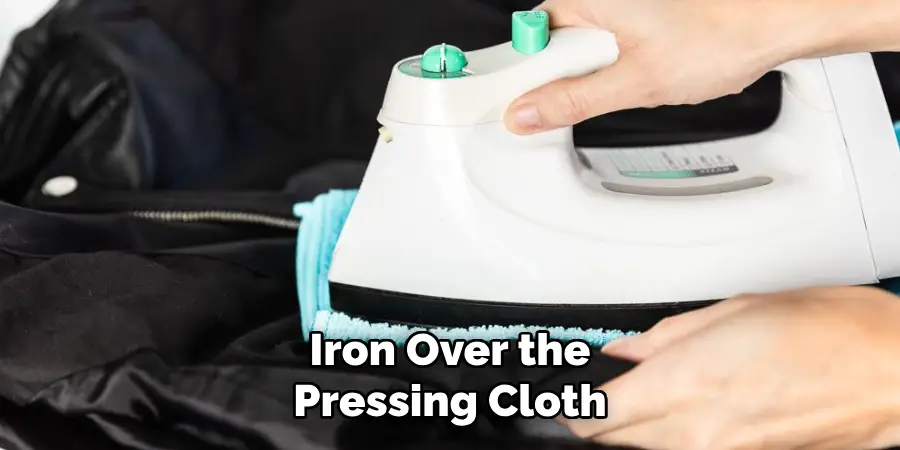
Pressing cloths are also useful for protecting delicate embellishments or prints on leather pants. Simply place the cloth over the area before ironing to prevent any damage.
In addition, pressing cloths can also help prevent shiny spots from forming on the leather surface. These spots occur when excessive heat is applied directly to the leather, making it appear dull and damaged. By using a pressing cloth, you can evenly distribute the heat and prevent these spots from appearing.
6. Iron on a Low Heat Setting:
Leather is sensitive to heat, so use a low heat setting on the iron. High heat can lead to scorching, discoloration, and damage to the leather’s natural oils. Patience is key, as ironing on a low heat setting may take longer but helps preserve the integrity of the leather. Use a pressing cloth to protect the leather and prevent direct contact with the iron.
Additionally, it is important to keep the iron moving constantly and avoid leaving it in one spot for too long. This helps distribute the heat evenly and prevents any potential damage.
It is also recommended to test a small inconspicuous area of the leather first before ironing the entire garment or item. This will help ensure that the leather can withstand the heat and prevent any unwanted damage or discoloration.
7. Hang to Remove Creases:
Hanging leather pants in a steamy bathroom can help relax creases naturally. The combination of moisture and heat aids in reducing wrinkles. Allow the pants to hang for some time, and gently pat out any remaining creases by hand.
For stubborn creases, use a garment steamer or iron with a pressing cloth. Make sure to set the heat to low and avoid direct contact with the leather as it could lead to damage.
Another tip is to stuff the pants with paper or fabric while they hang, which can help smooth out wrinkles in hard-to-reach areas like pockets and cuffs.
Remember to never use hot water on leather as it can cause shrinkage and damage the material. Always opt for a mild soap or leather cleaner when working with wet spots or stains.
8. Professional Leather Care Services:
If you’re unsure about ironing leather pants yourself, consider seeking professional leather care services. Experienced professionals have the knowledge and tools to handle leather garments safely, ensuring they receive the care needed to maintain their quality.
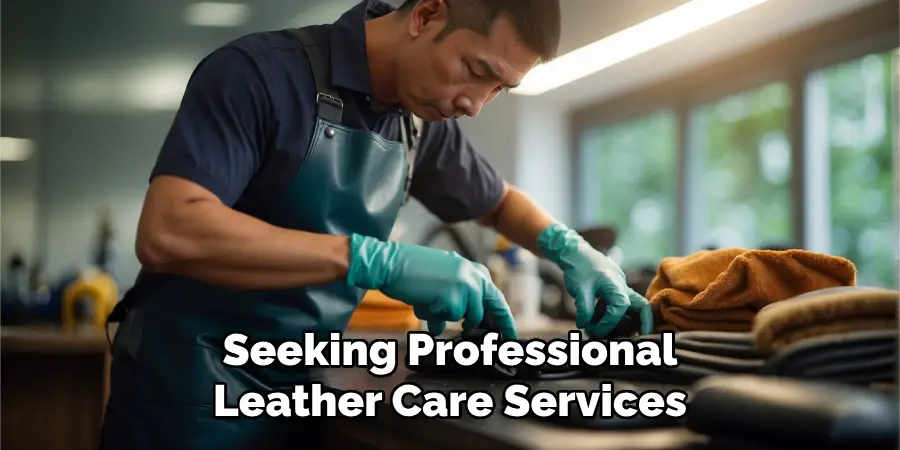
Although these services may be more expensive than DIY methods, they can save you time and stress in the long run. To find a reputable leather care service, consider asking for recommendations from friends or family, reading reviews online, and checking the company’s credentials. Additionally, you can also inquire about their processes and techniques to ensure they align with your preferences.
Moreover, professional leather care services offer a range of services beyond just ironing. They often provide cleaning, conditioning, and restoration treatments for various types of leather garments and accessories. For instance, if your leather jacket has been damaged by water or stains, these professionals can treat it with specialized techniques to restore its appearance and condition.
9. Leather-Safe Ironing Board Cover:
If using an ironing board, ensure it has a leather-safe cover or place a thick, cotton cloth over the board. This prevents the metal mesh of the ironing board from imprinting on the leather. The cover should be smooth and free of any seams that could leave marks.
For leather garments, it is important to have a smooth and even surface while ironing. Ironing boards with metal mesh can easily damage delicate leather materials, leaving them with permanent marks that are difficult to remove. To avoid this, invest in a leather-safe ironing board cover or use a thick cotton cloth as an alternative.
10. Store Properly to Prevent Wrinkles:
To minimize the need for ironing, store your leather pants properly. Hang them on padded hangers to maintain their shape, and avoid folding them for extended periods, as this can lead to creases. Store in a cool, dry place away from direct sunlight. Avoid storing in plastic bags, as this can trap moisture and cause mildew to form.
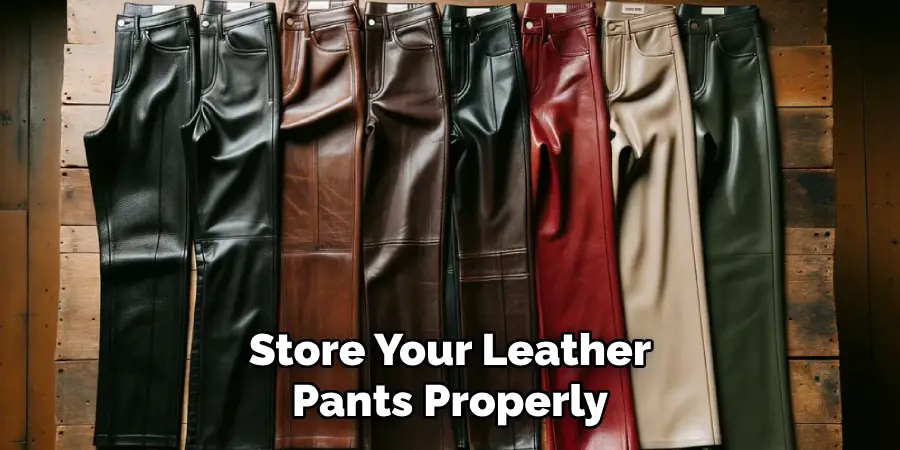
Apart from proper storage, you can also prevent wrinkles by taking care of your leather pants while wearing them. Avoid sitting for extended periods or crossing your legs, as this can cause creases to form on the material. When possible, try to lay down a towel or cloth before sitting down to avoid direct contact with rough surfaces.
Conclusion
In conclusion, mastering the art of ironing leather pants is crucial for maintaining their sleek appearance and ensuring they look their best. By understanding the characteristics of leather and following the outlined ironing techniques, individuals can effectively remove wrinkles and creases from their leather pants while avoiding damage to the material.
Proper preparation, including assessing the condition of the pants and selecting the appropriate ironing temperature and method, sets the stage for successful ironing outcomes.
Post-ironing care, such as allowing the leather to cool down and inspecting for any remaining wrinkles, helps ensure a polished look. Embracing careful and gentle ironing practices not only enhances the appearance of leather pants but also contributes to their longevity and durability. Hopefully, this article gave you some helpful tips about how to iron leather pants successfully, so now that you have the proper knowledge on how to get the job done, why not give it a try today?

